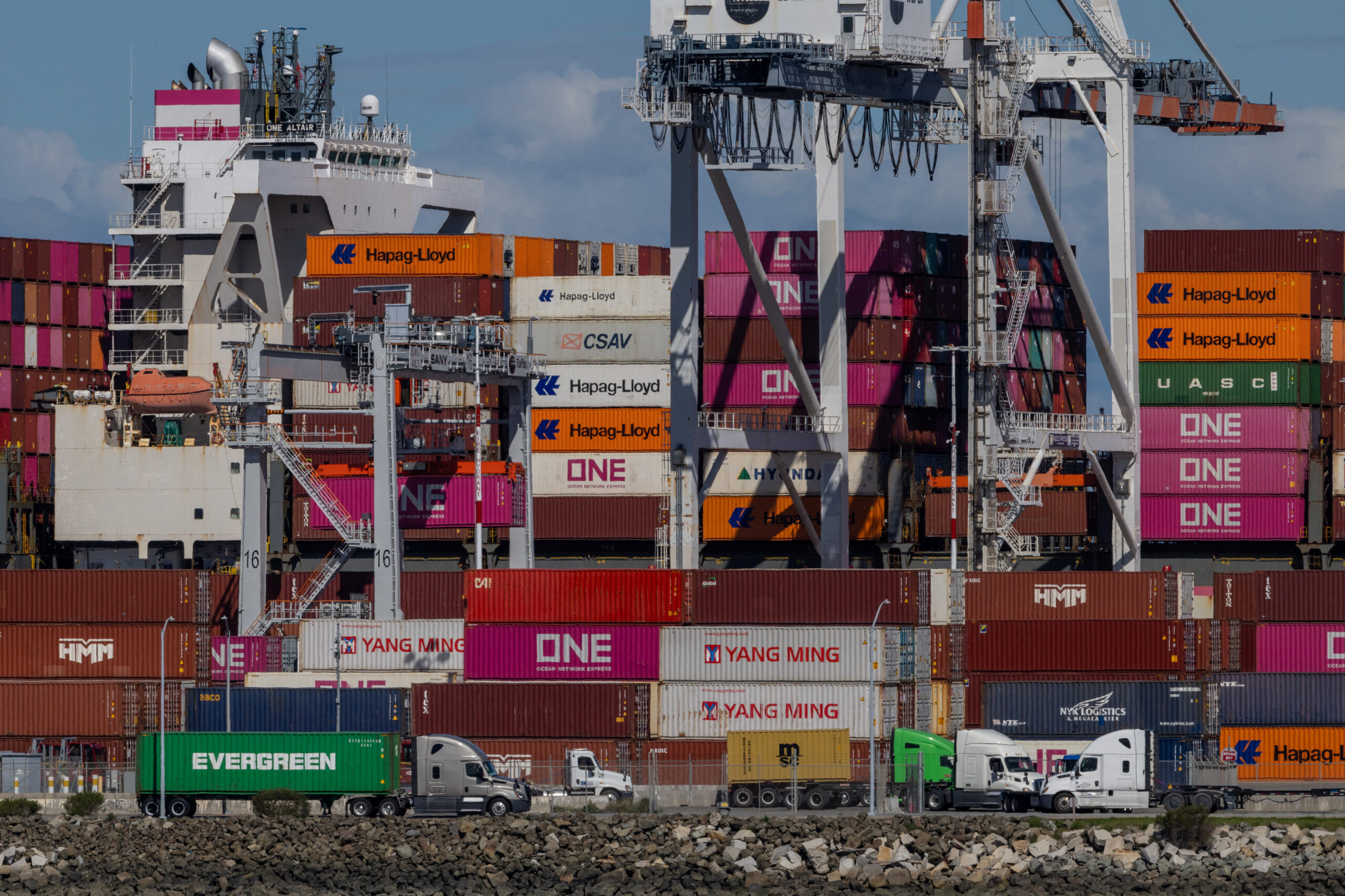File photo: REUTERS/Barry Huang
By Kyunghee Park and Clement Tan
(Bloomberg) — China Cosco Holdings Co. posted a 22 percent slump in earnings last year, while China Shipping Container Lines Co. swung to a loss as overcapacity of vessels led to lower rates.
Net income for China Cosco fell to 283.4 million yuan ($43.8 million) in 2015, from 362.5 million yuan in 2014, the company said in a statement to the Hong Kong stock exchange Wednesday.
China Shipping Container Lines Co. posted a net loss of 2.9 billion yuan last year, compared with profit of 1.04 billion yuan in 2014, the nation’s second-biggest container shipping company said in a separate statement Wednesday. China Shipping in January had forecast a loss of 2.8 billion yuan for 2015.
Those results are the companies’ last in their old guises. Amid a drop in shipping rates, China’s government combined two of the country’s biggest state-owned shipping groups last year to create Asia’s largest container line and increase their competitiveness against bigger operators such as A.P. Moeller Maersk A/S and CGM CMA SA. Shipping lines worldwide have been selling assets and exploring consolidations to stem losses as the fees they charge customers plunged after years of slowing trade and overcapacity.
Consolidation Race
China’s state-owned Assets Supervision and Administration Commission announced approval in December for the reorganization of China Ocean Shipping Group and China Shipping Group, extending efforts to shrink industries plagued by overcapacity while creating globally competitive businesses. The announcement had come days after CMA CGM, the world’s third-biggest container shipping company, offered to buy Singapore’s Neptune Orient Lines Ltd. for S$3.38 billion ($2.5 billion).
“At the current shipping rate, most of the liners are losing money,” Um Kyung A, an analyst at Shinyoung Securities Co. in Seoul, said before the earnings were released. The situation worsened after oil prices fell and cut shipping lines’ expenses, reducing the urgency for them to continue efforts to trim capacity, Um said.
Under the new structure, China Cosco operates container ships and China Shipping is a leasing and financing company for vessels and boxes. Cosco Pacific Ltd. holds wharf assets held by China Shipping to operate the combined company’s terminals globally. China Shipping Development Co. will be the focal point for oil- and gas-transportation business.
The combined Chinese company has 7.4 percent of the global container shipping market, the largest share among Asian operators, according to Alphaliner.
Declining Numbers
Sales at China Cosco fell 14 percent to 57.4 billion yuan in 2015, while China Shipping’s sales dropped 12 percent to 31.8 billion yuan.
China Cosco moved 4.1 percent more 20-foot containers last year, while China Shipping carried 3.5 percent fewer boxes. China Cosco’s fuel expenses — a large part of container shipping companies’ costs — fell 36 percent last year as the price of Brent crude dropped 35 percent.
Spot prices to move a 20-foot container to Europe from Asia fell to $247 in the week ended March 25, from $1,149 at the end of 2014, according to the Shanghai Shipping Exchange. A week earlier, they fell to $205, the lowest level since the exchange started providing data in October 2009. Levies to the U.S. West Coast dropped to $748 per 40-foot box, from $2,125 at the end of 2014. The two routes are the busiest trade lanes.
Moody’s Investors Service cut the shipping industry’s outlook to negative in a March 17 report, citing expectations for supply to outstrip demand by more than 2 percent and suppressing rates.
China Cosco rose 1.7 percent to close at HK$3.03 in Hong Kong trading Wednesday ahead of the earnings release, and China Shipping advanced 4.2 percent to HK$4.95.
© 2016 Bloomberg L.P

 Join The Club
Join The Club











